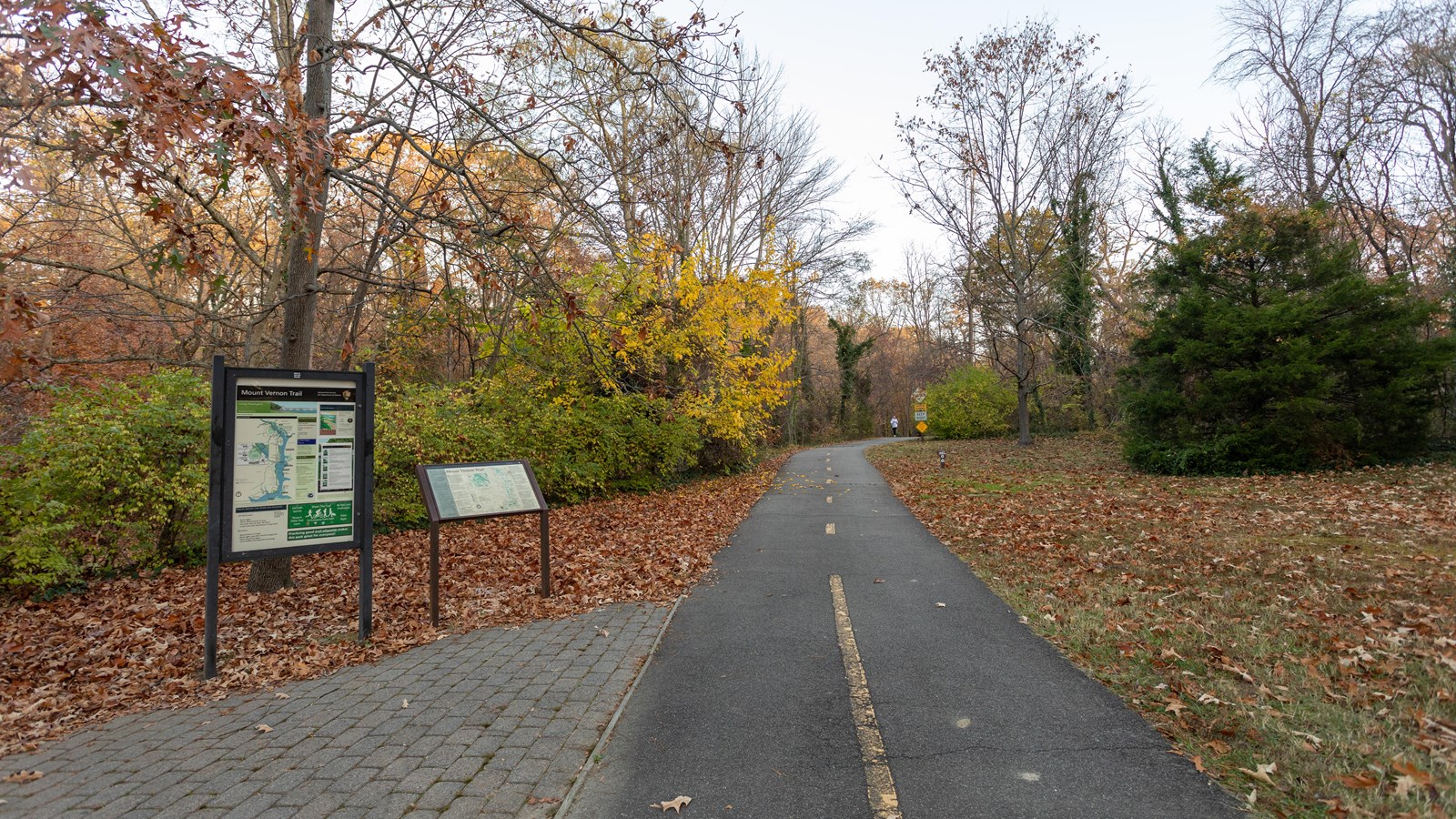Last updated: March 19, 2024
Place
Mount Vernon Trail Mile 0

Photo: NPS / Claire Hassler
Historical/Interpretive Information/Exhibits, Trailhead
About the Trail
In 1973, the National Park Service constructed the Mount Vernon Trail along the Potomac River, paralleling the George Washington Memorial Parkway.
With the river as your companion, you can run, ride, or walk along this 18-mile multi-use trail stretching from the Mount Vernon Estate to Theodore Roosevelt Island.
Trail Safety
The Mount Vernon Trail is a very popular multi-use trail shared by bicyclists, runners, walkers, and rollerblades. There are up to 80,000 visitors per month along the trail, and it can get congested. Here are some guidelines to follow to ensure your safety while visiting the park.
- Be alert and be courteous.
- Use caution when entering and crossing the trail.
- Keep right and move off the trail when stopped.
- Slow down before intersection and in congested areas.
- Watch for children on the trail, and parents, be attentive to your child's activities.
- Pet owners must keep pets on a leash no more than six feet long.
- Ride, walk, or skate single file; yield to slower users; and obey the 15 mph speed limit.
-
Bicyclists: Pass on the left. Before passing scan ahead and behind and signal with a bell or voice. Allow at least two bike lengths of room before moving back to the right. Do not pass when visibility ahead is limited.
For maps and more information, please visit www.nps.gov/gwmp
U.S. Marine Corps War Memorial
Learn more about the U.S. Marine Corps' long history of service. Sculpted from a famous photograph of the second flag raising during the World War II battle for Iwo Jima, the monument honors all Marines who have given their lives in defense of the United States of America.
Netherlands Carillon
Enjoy a concert played on the tower's 50 bronze bells. The carillon is a gift from the Dutch people to the American people in thanks for aid received during and after World War II.
Women in Military Service for America Memorial
Discover the contributions of women who have served in or with the armed forces. Exhibits document their service, sacrifices, and achievements in a setting with panoramic views of Washington, D.C.'s monuments.
Arlington House, The Robert E. Lee Memorial
Tour a 19th century plantation estate. Arlington House has been home to the Custis and Lee families, 63 slaves, a military headquarters, and a national cemetery.
Lady Bird Johnson Park and LBJ Memorial Grove
Stroll through 15 acres of gardens and ponder quotes from our 36th president. The park overlooks the capital and offers extraordinary views across the Potomac.
Theodore Roosevelt Island
Explore 2.5 miles of walking trails and a memorial to our 26th president. Landscaped by Fredrick Law Olmstead, Jr. to resemble a climax forest, the island is a fitting tribute to one of America's great conservationists. Leave your bicycle at the racks.
Navy and Marine Memorial
Reflect on the "strong souls and ready valor" of the United States Navy and Merchant Marine. Modernist Harvey Wiley Corbet designed its Waves and Gulls statue.
Old Town Alexandria
Visit museums and shops, or just wander along the cobblestone streets of Alexandria's historic district.
Jones Point Park
See Virginia's last remaining river lighthouse. Built over a stone marking the original boundary of the District of Columbia, the Jones Point light guided ships up the Potomac.
Dyke Marsh Wildlife Preserve
Watch for wildlife in this 485 acre wetland. The Haul Road Trail passes through a freshwater tidal wetland, a rare habitat in the Washington Metropolitan area and home to hundreds of species of birds. Leave your bicycle at the racks.
Fort Hunt Park
Explore gun batteries and look for traces of a secret P.O.W interrogation camp. Fort Hunt defended Washington, D.C. from the Spanish navy during the Spanish American War. German prisoners processed there during World War II gave their interrogators information that changed the course of the war.
